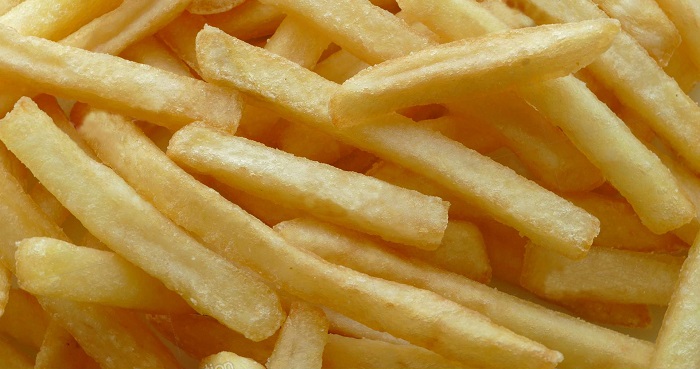 The French fry is truly an American icon. After all, what is a burger without fries? And what would have become of fast food without French fries?
The French fry is truly an American icon. After all, what is a burger without fries? And what would have become of fast food without French fries?
We can thank France for the Statue of Liberty, and we can thank Belgium for the French fry. That’s right. French fries weren’t invented in France at all, but by Belgians in the late 1600s.
Americans wanted to attribute our fries to the French, perhaps because we had no better way to thank them for Lady Liberty than naming one of our favorite foods after them.
Fries started appearing as fast food in Europe in the late 18th Century. Ketchup wasn’t the condiment of choice for fries, because Ketchup wasn’t invented until 1812, and it wasn’t popularized until the Heinz family began bottling it.
Ketchup wasn’t originally derived from tomatoes, but was invented in China, and made from pickled fish with spices. The condiment spread (no pun intended) to Malaysia and Singapore where it was adopted by English colonists. They called it “Kay-chap.” the English changed the name to Catchup. Spelling nerds changed it to Ketchup.
It wasn’t until a century later that ketchup was made from tomatoes. And even the 1913 definition defined ketchup as “table sauce made from mushrooms, tomatoes, walnuts etc.”
When sodium benzoate was invented as a preservative for condiments, modern-day ketchup was invented. But sodium benzoate was banned by food purity laws in the 1906 Pure Food and Drug Act. This provided a niche for H.J. Heinz to develop a recipe for ketchup, which consisted of pickled tomatoes in vinegar, then pureed. It was a recipe that could be mass-produced and canned without the use of additional preservatives.
High-fructose corn syrup didn’t appear as a major ingredient in ketchup until the mid 1970s. In the mid-1990s, ketchup lost its crown as the number one American condiment to salsa. With all the spices in craft salsas, we are actually returning closer to the original definition of ketchup (minus the walnuts and mushrooms). But let’s get back to the fries.
French fries became truly popular in fast-food restaurants around the mid 1960s. Back then, all fries and fish and chips and cheese sticks were deep fried in beef tallow.
When Ray Kroc became enamored with the McDonald Brothers restaurant, it wasn’t the burgers or shakes or even the efficiency of the fast-food restaurant that amazed him most—it was the deliciousness of the french fries they served. They were crispy on the outside and buttery soft on the inside, and absolutely delicious. When it came to potatoes, the McDonald brothers preferred the long Idaho Russets, when they were in season.
“The french fry,” Kroc once wrote, “would become almost sacrosanct for me, its preparation a ritual to be followed religiously.”
A potato that has too great a percentage of water—and potatoes, even the standard Idaho russet burbank, vary widely in their water content—will come out soggy at the end of the frying process.
It was Kroc, back in the fifties, who sent out field men, armed with hydrometers, to make sure that all his suppliers were producing potatoes in the optimal solids range of twenty to twenty-three percent.
Freshly harvested potatoes are rich in sugars, and if you slice them up and deep-fry them, the sugars will caramelize and brown the outside of the fry long before the inside is cooked.
To make a crisp French fry, a potato has to be stored at a warm temperature for several weeks in order to convert those sugars to starch. Here, Kroc led the way, mastering the art of “curing” potatoes by storing them under a giant fan in the basement of his first restaurant, just outside Chicago.
–From the New Yorker Magazine
What Kroc started developing was not only a product, but a method for producing identical results on each and every visit to McDonald’s, to locations across the county. The french fries were the biggest challenge because the sugar-to-starch ratios and water content had to be perfect for consistent results.
Growing conditions, potato varieties, packaging and handling, had to be consistent in order for McDonald’s to deliver the same fries in California as they were delivering in Utah. This was a huge accomplishment. And what Ray Kroc standardized in kitchens, a man named J.R. Simplot, from Idaho, completed on the agricultural end.
Simplot (based in Boise, Idaho) is by far the largest producer and shipper of fresh and frozen potatoes in the nation. Simplot refined the growing technique for producing the ideal Idaho Russets, teaching farmers how to produce the same potatoes, using just the right amount of fertilizer and water and proper growing techniques. Simplot’s factories would then cut, flash cook and flash freeze, perfectly cured fries for shipping all over the country to fast-food chains and frozen food sections of supermarkets.
Simplot landed the McDonald’s account in 1967 on a handshake deal with Kroc. But Idaho Russets were only available three months out of the year. The huge advantage Simplot provided was that Simplot’s frozen french fries could be made available all year long.
Simplot and Kroc are two of the biggest names in the industrialized food movement. Simplot was the oldest billionaire on the Forbes 400 list. We can see that today while vast numbers of Americans still love McDonald’s, their french fries aren’t what they used to be.
In the 1990s, the American media was helping fight a crusade against saturated fats, which at the time, were linked to high cholesterol. McDonald’s and other fast-food chains altered the recipe for fries. They changed from using oils made from beef tallow or lard (which is an incredibly stable oil) to using hydrogenated vegetable oils and trans fats, which we later learned are far worse than saturated fats.
Today, most fries are deep fried in a combination of canola oil, corn oil, soybean oil and hydrogenated soybean oil. The soybeans and the canola oils are made from GMO soybeans.
Hydrogenated soybeans are modified from their natural form which the human body doesn’t process well. Doctors know that saturated vegetable oils are terrible for our health, and we would be better off eating the original recipe for fries cooked in beef tallow. But unless enough consumers call for it, we can’t expect the hydrogenated soybean oil to be removed from our fries, nor the high-fructose corn syrup to be removed from our ketchup anytime soon.
Perhaps this is why consumers are buying local instead, where the ingredients are pronounceable and not produced in factories, but in kitchens.
In Utah, Crown Burger is king when it comes to French fries. And our Utah fry sauce is far superior to ketchup. I’m addicted.





